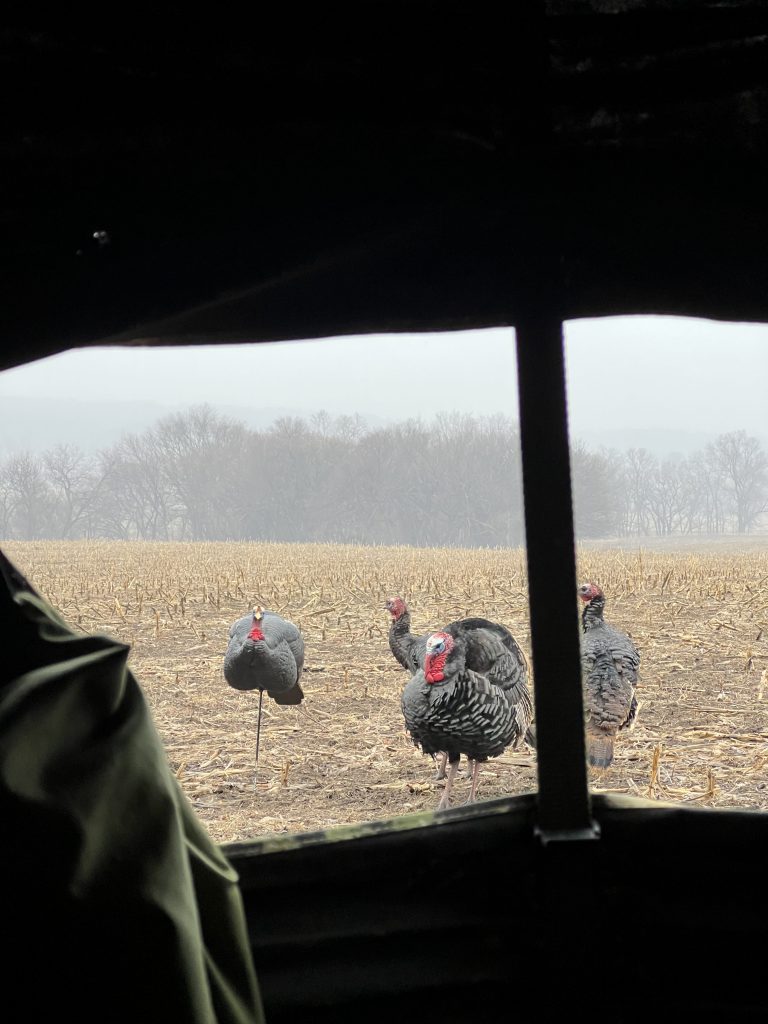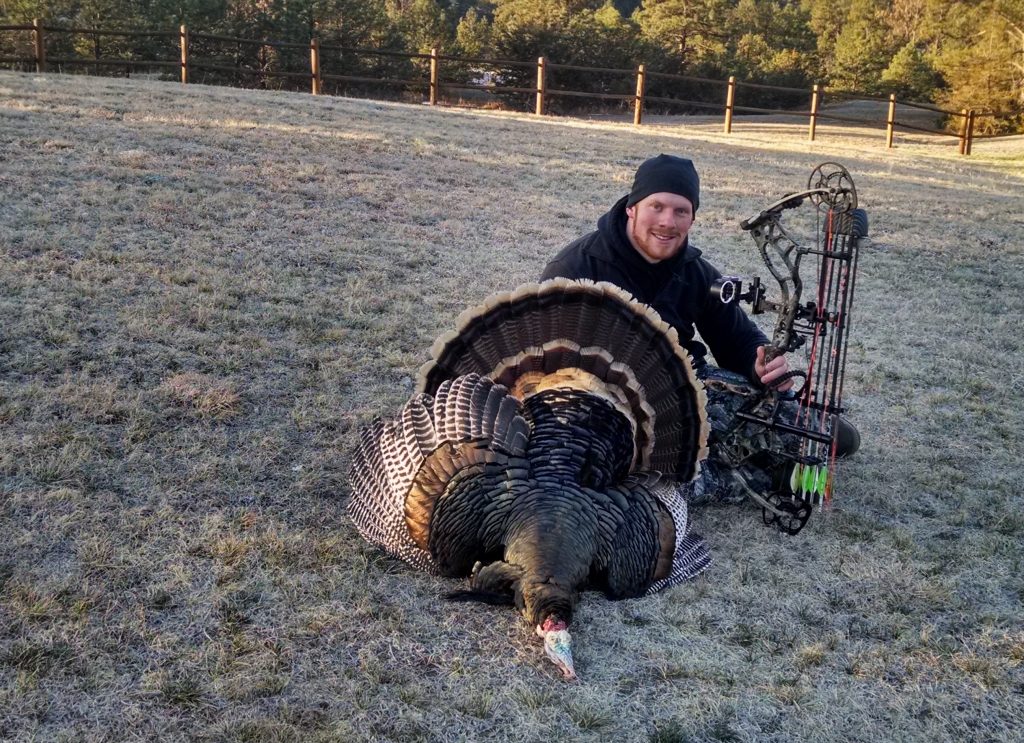Archery-Only Spring Hunts
If you want the early-bird special, pack your bow and head for one of these states.
The flock, guarded by two big toms, flew down from the roost and meandered toward my hen and jake decoys, which were only 5 yards beyond my Double Bull ground blind. The hens gawked curiously, dragging the gobblers in on a string. Soon, the long-beards strutted right next to the decoys.
Between my heartbeat and the spitting and drumming, the encounter was all I could take. I drew my bow, picked out a strutter and released. Minutes later, I was slinging a stunning Nebraska gobbler over my shoulder just before sunrise during the state’s archery-only season, which precedes the regular spring turkey season.
Hunting early birds with a bow can be challenging because turkeys are still in large flocks and it’s difficult to call them in, but pursuing unpressured birds is a big advantage. That’s why you should consider packing your bow and heading for one of these states this spring.
South Dakota
The Mount Rushmore State has long been a go-to destination for hunters craving Western adventure. According to the NWTF’s subspecies distribution map, South Dakota is primarily home to Merriam’s turkeys, with very small Eastern and Rio Grande pockets. Also, there are likely hybrids in some areas, especially along the Nebraska border.
South Dakota recently tweaked its turkey season structure. Previously, an archery tag was valid statewide beginning during the archery-only season, which preceded the regular season. The tag is still valid statewide except for special restrictions, but the archery and regular seasons share the same openers. Prairie turkey units open April 13, 2024, and the Black Hills opens April 27.
Even though archery hunters no longer get first dibs and must share the field with shotgunners, the advantage of the archery tag is that there is no application deadline, whereas the regular tags have a February application deadline. In other words, archery hunters are guaranteed a tag, but some regular tags aren’t a guaranteed draw. A nonresident tag costs $100.
I hunted South Dakota with a bow in Spring 2023. I hiked about two miles deep onto a walk-in area to reach a river bottom where birds were roosting, and there were a lot of them. I saw very strong numbers, and if they survived the winter, I’d imagine they could survive anything. I anticipate Spring 2024 to offer great opportunities.
South Dakota is DIY-friendly, too. Stretch your legs in the expansive Black Hills National Forest, Custer National Forest, game production areas sprinkled throughout the state, U.S. Corps of Engineers lands and Walk- In Program areas. Hotspots tend to be along river bottoms and the terrain breaks along the Missouri River, but don’t overlook isolated cottonwood pockets amidst the prairies. I suggest purchasing HuntStand Pro to help identify regions with ample public lands and to e-scout before your hunt to find turkey habitat.

Nebraska
Once a sleeper, the Cornhusker State is a main attraction for traveling turkey hunters. Increased harvest rates and population instability have taken a toll in recent years, as hunters and guides who’ve been turkey hunting in Nebraska for more than a decade have seen a decline.
Fortunately, Nebraska Game and Parks has taken action. Previously, there wasn’t a quota on turkey tags, but I learned when attempting to buy a turkey tag this past spring while shed hunting that a 10,000-nonresident-permit quota had been implemented. All had sold out by March 24. I was bummed I couldn’t hunt but thrilled that action had been taken to avoid overharvest. The decreased population that hunters and guides have been reporting should rebound.
And although numbers are down, there are certainly enough turkeys to keep hunters entertained. So, decide early if you want to hunt Nebraska, and nab your $128 tag(s) — two permits can be purchased per person until the quota is met — before they sell out. If you want the first crack at turkeys, plan a late-March hunt during the archery-only season, which annually premieres March 25 and runs about a week into April before shotgunners are turned loose.
Nebraska has plenty of public hunting options in some areas, while other spots are practically void of public lands. The northwestern corner is home to excellent habitat and thousands of public acres, but it’s a hub for nonresidents, so expect some pressure. Also look at the Nebraska National Forest near Halsey, as well as the Scottsbluff and McCook areas.
Kansas
Kansas has been a decades-long turkey-hunting favorite. Once teeming with unreal numbers, prospects have scaled back a bit in recent years, though most folks who put forth effort still experience great hunting in the Sunflower State.
Luke Kramer, Kansas Department of Wildlife and Parks biologist, said areas with great habitat are seeing solid turkey reproduction, but that Kansas’ turkey numbers are undoubtedly down. Still, he believes there are more than enough opportunities for a thrilling hunt. He mentioned that units 1 and 2 likely have the state’s strongest turkey populations.
Nonresidents can purchase their turkey tag, valid for any bearded turkey, over the counter and hunt units 1, 2, 3, 5 and 6. As with Nebraska, Kansas archery hunters get dibs during the bow-only season, which precedes the regular season.
Here’s a great approach while mapping out your hunt: Choose a state wildlife area with riparian habitat as the focus, but also be attentive to WIHA parcels on the outskirts that have roosting and feeding habitat, which can be determined using the relative layers and features of HuntStand Pro. This will give you plans A through C for your Kansas hunt.

CONNECT WITH US
National Wild Turkey Federation
770 Augusta Road, Edgefield, SC 29824
(800) 843-6983
National Wild Turkey Federation. All rights reserved.
